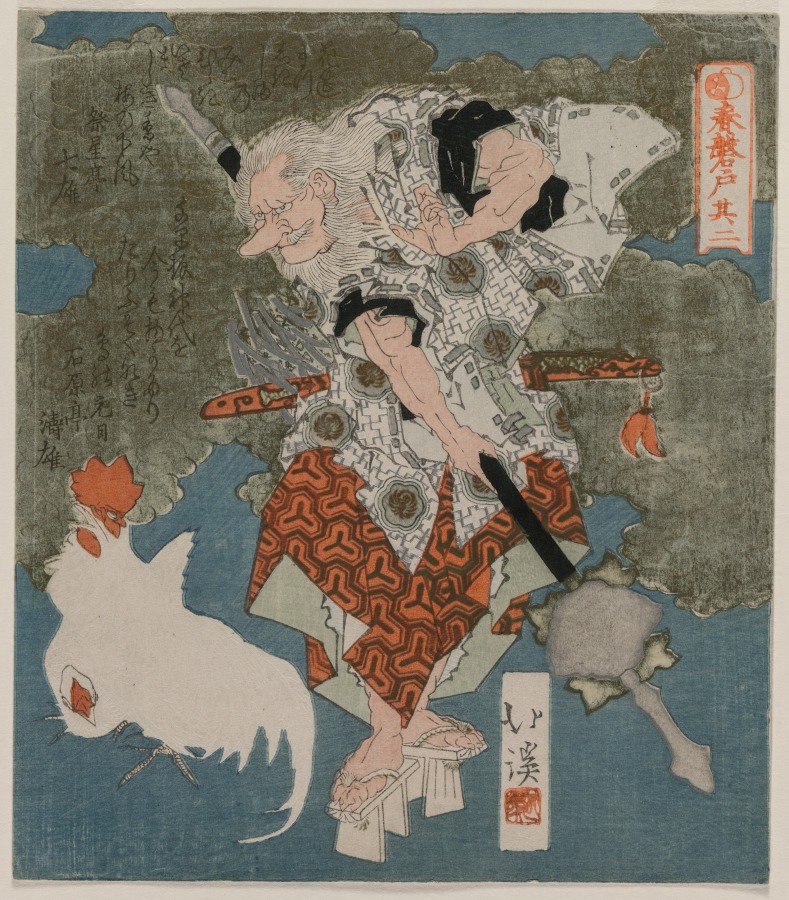| schema:description 10 | "id: 120232" |
| schema:description | "culture: Japan, Edo Period (1615-1868)" |
| schema:description | "type: Print" |
| schema:description | "measurements: Sheet: 18.5 x 21.6 cm (7 5/16 x 8 1/2 in.)" |
| schema:description | "creditline: Bequest of James Parmelee" |
| schema:description | "collection: Japanese Art" |
| schema:description | "inscription: Signature: Hokkei
Seal: Hokkei" |
| schema:description | "wall_description: These elegant surimono prints come from a set of five images inspired by the legend of the Shinto Supreme Sun Goddess, Amaterasu. She was once so offended by her brother that she retreated to a cave, leaving the earth in darkness. Several attempts to lure her out with cocks crowing, music-making, and a goddess dancing failed, but a mirror hung from a nearby tree made Amaterasu curious, bringing her to the entrance of the cave. A stone was quickly placed at the entrance to
block her way back into the cave, and light was restored to the world. Each print is set against a blue evening sky with embossed clouds enriched with gold, silver, and copper....(more)" |
| schema:description | "tombstone: Beside a White Cock and Hen (From the Series The Spring Cave), 1825. Totoya Hokkei (Japanese, 1780-1850). Color woodblock print; sheet: 18.5 x 21.6 cm (7 5/16 x 8 1/2 in.). The Cleveland Museum of Art, Bequest of James Parmelee 1940.990.2...(more)" |
| schema:description | "technique: color woodblock print" |

